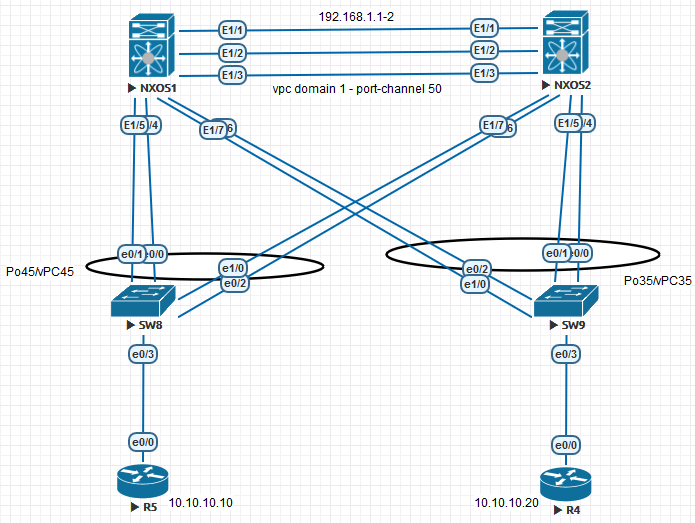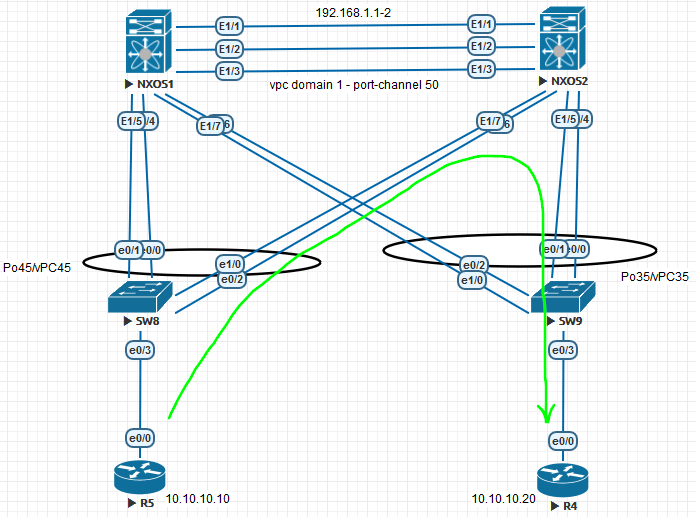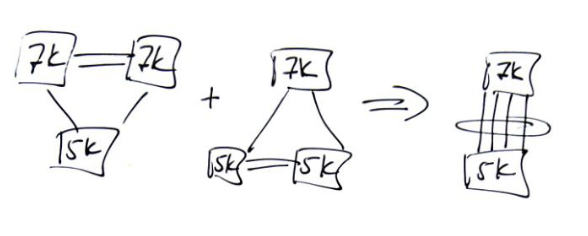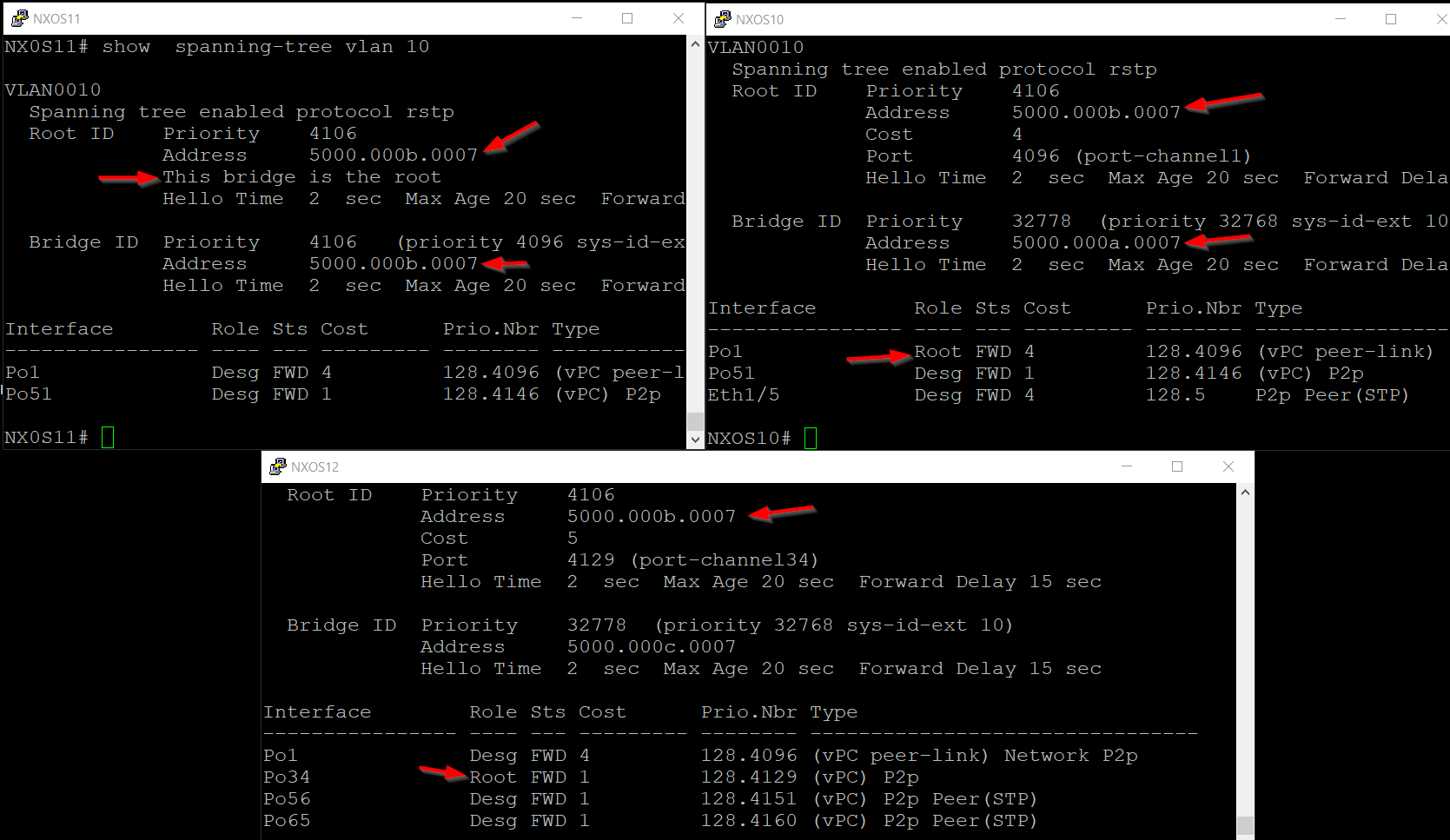The vPC Peer Link should never be blocking because this link carries important traffic such as the Cisco Fabric Services over Ethernet (CFSoE) Protocol. The peer link is always forwarding.

STP from SW8 and SW9:

STP from NXOS1 and NXOS2:

In the correct design, the vPC Peer Link should be used only in case of failure.
All links are up and active:

The link between SW8 and NXOS2 is down:

The link between SW9 and NXOS1 is down:

Back-to-Back vPC
A back-to-back vPC is a way of connecting two pairs of Nexus switches with vPC. Both ends think they have a connection to a single switch.

- The same vPC number must be used on both vPC peers
- vPC Peers models must matched (the same cards, models etc)

As a result NXOS13 will have two interfaces with Root role: Po1 (Peer Link) and Po34 (link to another vPC peers). In this case a Data Plane loop prevention mechanism is in use: the frame comes in on the Peer Link is not allowed to go out a member port.
vPC peer-switch
With peer-switch each Nexus switch shares a virtual bridge ID which allows both switches to act as root for the VLAN. Each Nexus switch sends BPDUs with a root bridge identified by the virtual bridge ID.
- NXOS12 is connected to the NXOS10/11 switches via a vPC and will be in a forwarding status. NXOS12 receives Bridge Protocol Data Units (BPDUs) only from the primary switch in the vPC
- Each NXOS10 and NXOS11 switch sends BPDUs with a root bridge identified by the virtual bridge ID.
Without peer-switch command:

With peer-switch command configured.
